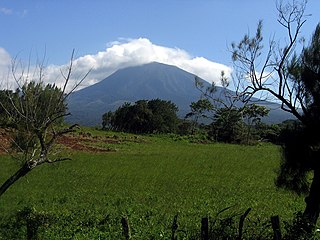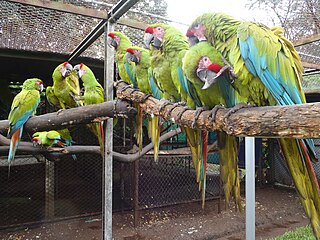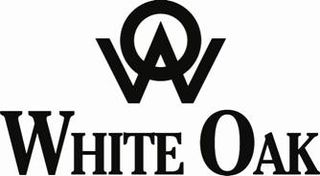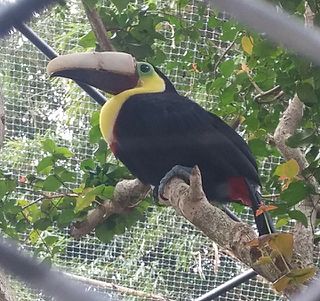
Bristol Zoo was a zoo in the city of Bristol in South West England. The zoo's stated mission was to "maintain and defend" biodiversity through breeding endangered species, conserving threatened species and habitats and promoting a wider understanding of the natural world".

Grecia is a district of the Grecia canton, in the Alajuela province of Costa Rica.

Alajuela is a province of Costa Rica. It is located in the north-central part of the country, bordering Nicaragua to the north. It also borders the provinces of Heredia to the east, San José to the south, Puntarenas to the southwest and Guanacaste to the west. As of 2011, the province had a population of 885,571. Alajuela is composed of 16 cantons, which are divided into 111 districts. It covers an area of 9,757.53 square kilometers.
National System of Conservation Areas is part of the Ministry of Environment and Energy (MINAE) of Costa Rica. It is the administrator for the nation's national parks, conservation areas, and other protected natural areas.

The wildlife of Costa Rica comprises all naturally occurring animals, fungi and plants that reside in this Central American country. Costa Rica supports an enormous variety of wildlife, due in large part to its geographic position between North and South America, its neotropical climate, and its wide variety of habitats. Costa Rica is home to more than 500,000 species, which represent nearly 5% of the species estimated worldwide, making Costa Rica one of the 20 countries with the highest biodiversity in the world. Of these 500,000 species, a little more than 300,000 are insects.

The great green macaw, also known as Buffon's macaw or the great military macaw, is a critically endangered Central and South America parrot found in Nicaragua, Honduras, Costa Rica, Panama, Colombia and Ecuador. Two allopatric subspecies are recognized; the nominate subspecies, Ara ambiguus ssp. ambiguus, occurs from Honduras to Colombia, while Ara ambiguus ssp. guayaquilensis appears to be endemic to remnants of dry forests on the southern Pacific coast of Ecuador. The nominate subspecies lives in the canopy of wet tropical forests and in Costa Rica is usually associated with the almendro tree, Dipteryx oleifera.
The Curú Wildlife Refuge is a Wildlife refuge of Costa Rica, part of the Tempisque Conservation Area, tropical dry forests on the southern Nicoya Peninsula, near Tambor. Although it is a wildlife refuge, it is also private property, forming part of a ranch of 12.14 square kilometres. A small region of the property is used for cattle breeding and growing crops such as soursop, guava, banana, mango and African oil palm, while the remaining area retains its natural vegetation.

Guanacaste Conservation Area is an administrative area which is managed by the Sistema Nacional de Areas de Conservacion (SINAC) of Costa Rica for conservation in the northwestern part of Costa Rica. It contains three national parks, as well as wildlife refuges and other nature reserves. The area contains the Area de Conservación Guanacaste World Heritage Site, which comprises four areas.
The Chattanooga Zoo at Warner Park is a 13-acre (5.3 ha) zoological park located in Warner Park in Chattanooga, Tennessee. The zoo was established in 1937 by the City of Chattanooga with the construction of two 4 by 6 feet cages for rhesus monkeys. The zoo has been accredited by the Association of Zoos and Aquariums (AZA) since 1998.
The Jaguar Rescue Center is an animal rescue center located near Puerto Viejo de Talamanca in the Limón Province of Costa Rica. The center is dedicated to the rehabilitation of mistreated, injured, orphaned, and/or confiscated animals. Once the animals are fully rehabilitated, they are reintroduced into their natural habitats in protected areas within Costa Rica, usually after a period in La Ceiba primary forest. Visitors are permitted in the center during certain times each day. The center was founded by the Italian biologist Sandro Alviani and his wife Encar García, a Catalan biologist, who runs it with help of volunteers from all around the world and hosts numerous mammals, birds, reptiles, and amphibians. The center also houses a large serpentarium of venomous and nonvenomous snakes native to Costa Rica.

The Ara Project was an NGO and former zoo run by a retired United States expatriate couple which existed in from the 1980s to 2008 as a private zoo under the name Amigos de las Aves, and was re-branded from 2009 to 2018 as "The Ara Project", with the goal to conserve the two native macaw species of Costa Rica: the great green macaw, known locally as lapa verde, and the scarlet macaw, known locally as lapa roja. It has since re-branded again.

Tortuguero National Park is a national park in the Limón Province of Costa Rica. It is situated within the Tortuguero Conservation Area of the northeastern part of the country. Despite its remote location, reachable only by airplane or boat, it is the third-most visited park in Costa Rica. The park has a large variety of biological diversity due to the existence within the reserve of eleven different habitats, including rainforest, mangrove forests, swamps, beaches, and lagoons. Located in a tropical climate, it is very humid, and receives up to 250 inches (6,400 mm) of rain a year.

Wingham Wildlife Park is a medium-sized wildlife park situated near Wingham in Kent, UK where it covers an area of 26 acres. In 2011 the species count at the park reached 180 species, growing to over 200 in 2013 covering fish, mammals, reptiles, amphibians, invertebrates and birds.

White Oak Conservation, which is part of Walter Conservation, is a 17,000-acre (6,900 ha) conservation center in northeastern Florida. It has long been dedicated to the conservation and care of endangered and threatened species, including rhinoceros, okapi, bongo antelope, zebras, dama gazelles, and cheetahs.

Centro de Conservación de Santa Ana is a wilderness area of approximately 52 hectares, located in the Uruca district, in the canton of Santa Ana, Costa Rica. It has an average altitude of 900 meters and is bounded to the east by the bed of the river Uruca. The site includes patches of one of the last remnants of dry tropical forest in the Central Valley, trails, Agricultural Historical Museum, soccer field, picnic area, a species of wild and domestic animals and a nursery of forest species.

Grecia was a chestnut-mandibled toucan known as the first toucan to receive a prosthetic 3D-printed beak.

Centro de Rescate Las Pumas is a rural park of approximately 14 hectares, located in southern Cañas, in the Guanacaste Province, Costa Rica.
Parque Nacional Simón Bolívar is an urban park of approximately 14 hectares, located in downtown San José, Costa Rica. It is the oldest botanical garden and zoo in Costa Rica. The name pays homage to Latin American national founder Simón Bolívar. It is administered by a conservation nonprofit foundation called Fundazoo. All animals in the zoo are orphaned, injured or have been disabled and are nursed back to health in hopes of releasing them.
La Marina Wildlife Rescue Center, or La Marina Zoo is an animal rescue centre located 8.5 km northeast of Ciudad Quesada, between Palmera and Aguas Zarcas, in the Alajuela Province of Costa Rica. The centre is dedicated to the rehabilitation of mistreated, injured, orphaned, and/or confiscated animals. Once the animals are fully rehabilitated, they are reintroduced into their natural habitats in protected areas within Costa Rica, primarily in the Parque Nacional Juan Castro Blanco to the south of the centre.














